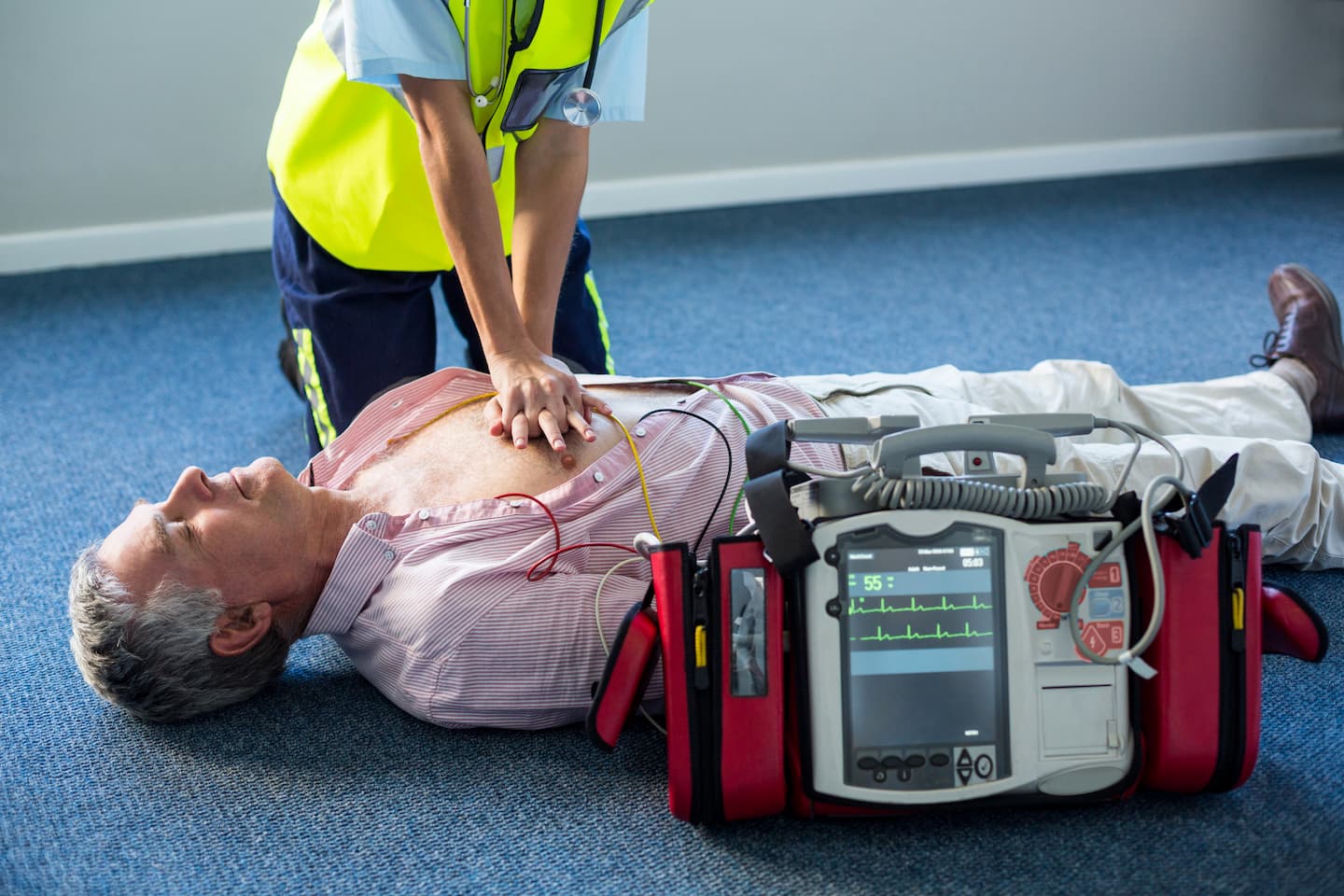
When you’re in the middle of performing CPR, every second counts. But what happens if the person you’re trying to save suddenly vomits? It’s a common—and understandably alarming—scenario that can leave even trained rescuers unsure of what to do next.
The short answer is: No, you should not stop CPR entirely if the person vomits, but you must promptly clear the airway, drain vomit or fluid, then resume compressions immediately.
However, you must respond quickly and appropriately to protect their airway and ensure your life-saving efforts continue effectively.
Let’s break down exactly what to do, why vomiting happens during CPR, and how you can stay prepared.
Why Vomiting Happens During CPR
Vomiting is one of the most common complications during cardiopulmonary resuscitation, especially when rescue breaths are involved.
Common causes include:
- Gastric inflation: Too much air goes into the stomach during rescue breaths.
- Unconsciousness: The body loses control over muscle reflexes, making vomiting more likely.
- Chest compressions: Forceful compressions can increase abdominal pressure.
- Underlying medical conditions or trauma: May cause nausea or vomiting before or during cardiac arrest.
It’s important to know: vomiting doesn’t mean you’ve done something wrong. It’s often an unavoidable part of the resuscitation process.
What to Do if Vomiting Occurs During CPR
When someone vomits during CPR, the immediate danger is airway obstruction or aspiration—when vomit enters the lungs. You need to act fast but stay calm.
Step-by-step guide:
- Roll the person onto their side (recovery position)
This allows vomit to drain from the mouth and reduces the risk of it entering the lungs. - Clear the airway
Use a gloved hand or cloth if available to sweep away visible vomit from the mouth. Avoid putting your fingers deep into the mouth unless necessary—this can stimulate more vomiting. - Return the person to their back
Once the mouth is clear, quickly roll them back and resume chest compressions immediately. - Modify rescue breaths (if trained)
If you are performing rescue breaths (and trained to do so), be cautious. Avoid giving breaths until the airway is clear. If vomit continues, focus solely on chest compressions. - Continue CPR until EMS arrives
Never stop CPR unless:- The person shows signs of life (movement, breathing, response)
- You are physically unable to continue
- A medical professional takes over
Should You Continue Rescue Breaths if Vomiting Occurs?
Rescue breaths can be effective, especially in cases of drowning or pediatric cardiac arrest. But in the presence of vomiting, it may not be safe or feasible to continue breaths immediately.
What guidelines suggest:
- American Heart Association (AHA) guidelines for untrained bystanders now recommend “Hands-Only CPR“– chest compressions only.
- If vomit is obstructing the airway or rescue breaths are causing more complications, stick to compressions.
Bottom line: If you’re unsure, focus on high-quality chest compressions until help arrives.
Common Myths About Vomiting and CPR
Let’s clear up a few misconceptions that might prevent you from acting confidently in an emergency:
Myth 1: Vomiting means CPR should stop
False. Vomiting is common, and CPR should continue after clearing the airway.
Myth 2: You could make the situation worse by continuing CPR
False. Doing something is always better than doing nothing. Chest compressions help circulate blood to vital organs.
Myth 3: Only professionals should handle someone who vomits during CPR
False. Everyday people save lives every day. Basic knowledge and composure can make all the difference.
What If You’re Uncomfortable Giving CPR After Vomiting?
It’s understandable to feel hesitant, especially when things get messy. But try to remember: your efforts could mean the difference between life and death.
Here’s how you can protect yourself and stay effective:
- Use a CPR face shield or barrier device if available
- Focus on compressions if you’re unsure about giving breaths
- Call 911 immediately and put your phone on speaker for dispatcher guidance
- Take a certified CPR class to build confidence and hands-on skills
Legal Protection for Good Samaritans
Worried about legal consequences? Most U.S. states have Good Samaritan laws that protect people who try to help in emergencies.
As long as you act in good faith and within your level of training, you are generally shielded from liability.
How to Prepare for Real-Life CPR Scenarios
Vomiting isn’t the only complication that can arise during CPR. To be fully prepared:
- Take a certified CPR class near you through the Red Cross, American Heart Association, or a local provider
- Learn how to recognize cardiac arrest vs. choking or seizures
- Practice recovery positions and airway clearing techniques
- Keep a CPR mask or keychain barrier device in your first aid kit or bag
Training doesn’t just teach technique—it gives you the confidence to act fast, even when things don’t go perfectly.
Final Thoughts: CPR Is Still Worth It—Even If It Gets Messy
Vomiting during CPR may feel like a curveball, but it’s a manageable and common part of the process. The key is to remain calm, protect the airway, and continue chest compressions. Your efforts matter more than you think—and could give someone a real chance at survival.
If you’re reading this because you’re curious, concerned, or preparing to be CPR-certified, you’re already on the right path.
Ready to get trained?
Search for CPR classes near you today on CPRClassesNearMe.com and get the skills that save lives—even in the messiest situations.

Leave a Reply